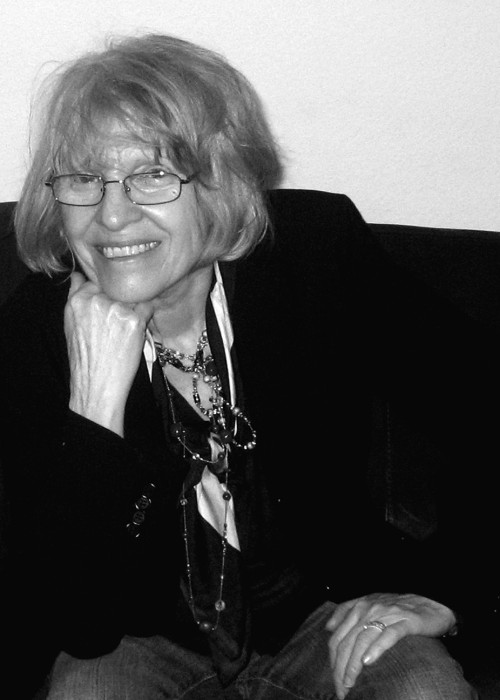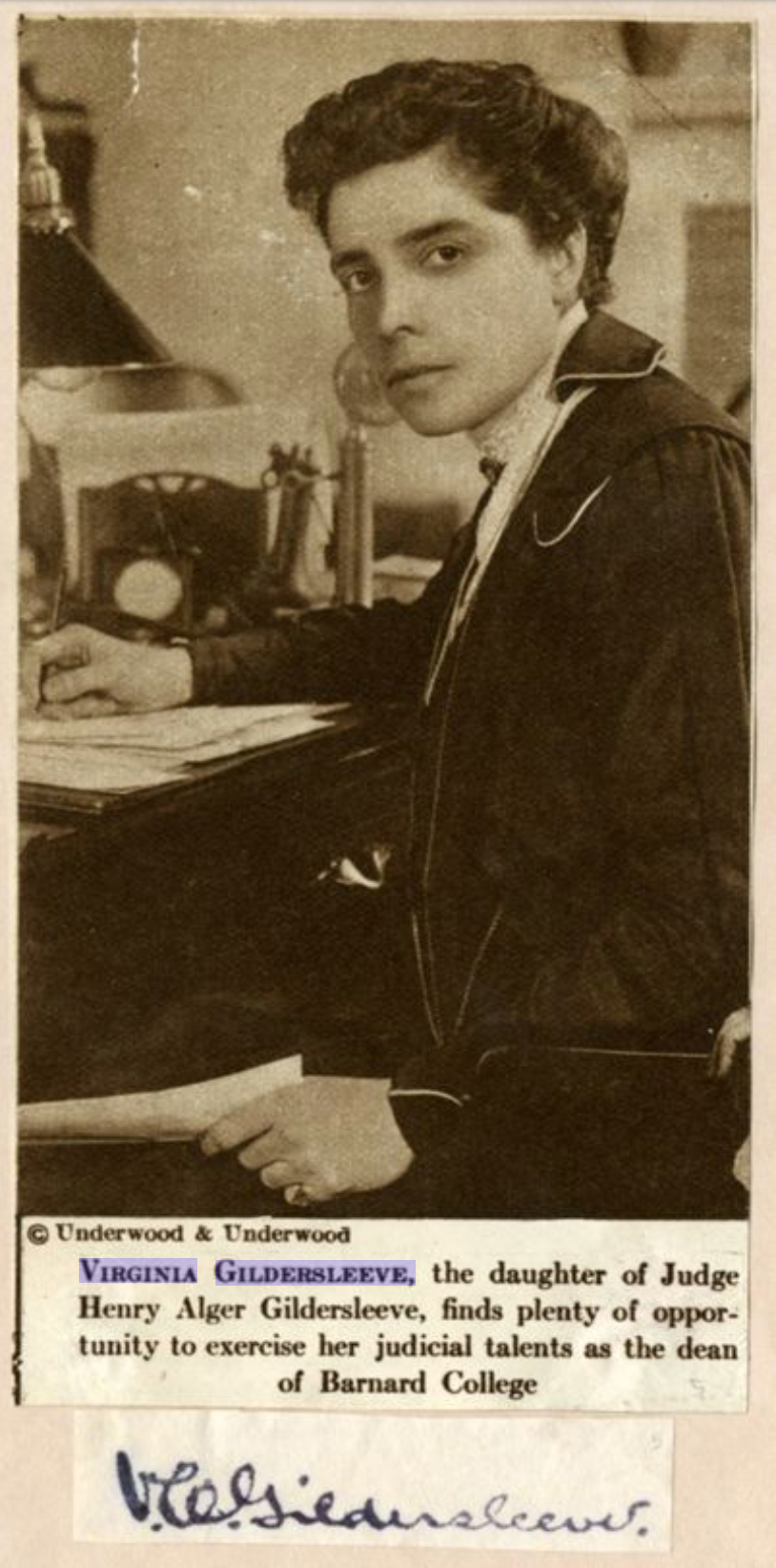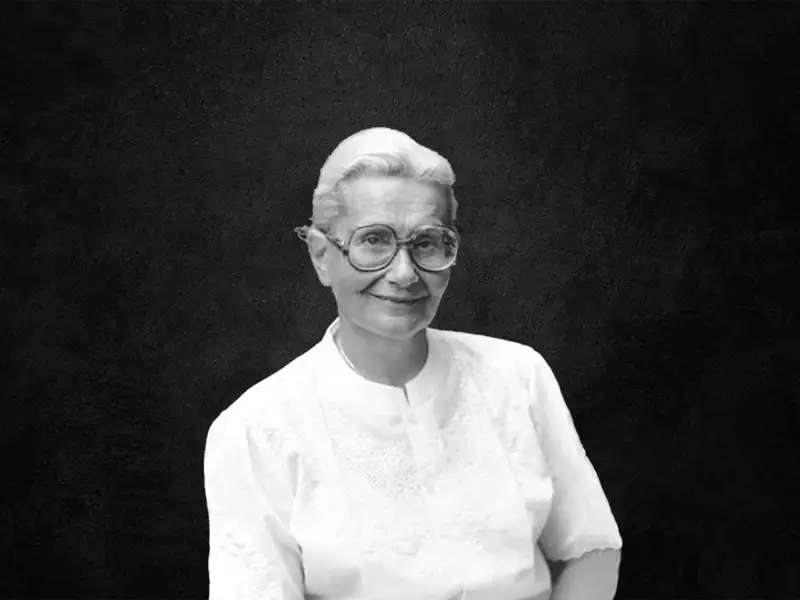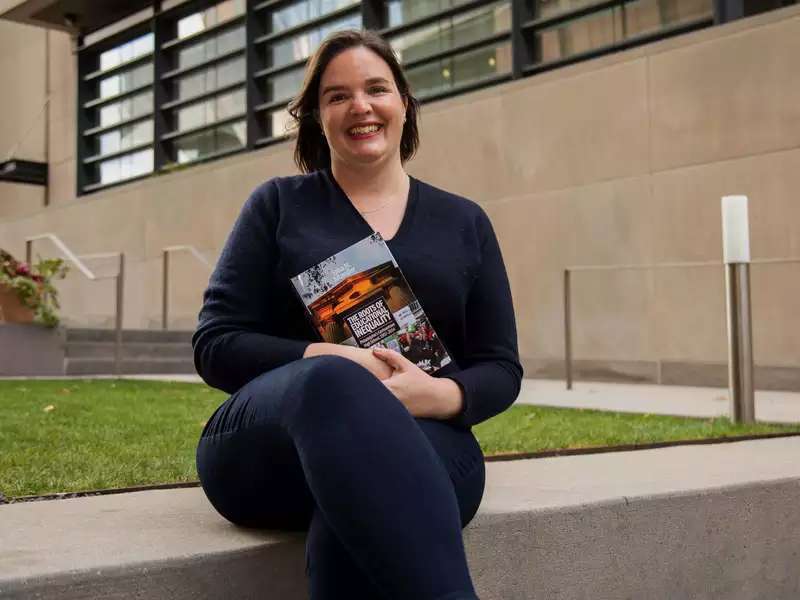
The latest book by Research Scholar Nancy Woloch, a specialist in women’s history, focuses on a topic close to home: Virginia Gildersleeve, a former dean of Barnard who served the College for over three decades, from 1911 to 1947. The book, The Insider: A Life of Virginia C. Gildersleeve, was published by Columbia University Press this March, just in time for Women’s History Month.
Gildersleeve was a key figure in the advancement of women’s education of her era. In 1927, she led the founding of the Seven College Conference — or the “Seven Sisters” — an elite consortium of prestigious liberal arts colleges for women. In 1919, she established the International Federation of University Women, now called Graduate Women International. By the 1920s, she had cultivated a faculty at Barnard that was half women, a feat still not achieved by many institutions of higher education today.
The former dean was not a perfect figure. “She imperiled her record of achievement,” Woloch noted, “by acts that proved controversial or misguided and that undercut her reputation at the time and in history.”
In a Q&A conducted by Lisa Tiersten, professor of history at Barnard and chair of the History Department, Woloch discusses some major themes and findings from her research on Gildersleeve.
What were some of Virginia Gildersleeve’s achievements at Barnard?
She kept the college solvent and afloat; drew a strong faculty; introduced advances for women faculty members, such as paid maternity leave; and won for women admission into the university’s professional schools. She impressed alumnae and trustees and carried her weight in university committees. Gildersleeve endorsed progressive theories on how learning occurs, and she defended the liberal arts tradition. She also introduced her global vision. Barnard pioneered in hosting foreign exchange students and visiting faculty from abroad and in setting up an international affairs program. Gildersleeve excelled at public relations and press relations; she used her position at the College as a springboard to grasp leadership roles in civic organizations and higher education lobbies.
What sorts of acts evoked controversy?
Gildersleeve has a deserved reputation for antisemitism in Barnard admissions; she made provocative statements about the rise of fascism in Europe in the early 1930s; her activism in postwar anti-Zionism drew opposition, too. These stances are distinct from one another, and I examine each in historical context. In her memoir, Gildersleeve suggests that a spirit of defiance sustained her various “crusades” and shaped her career. This is probably so. I find, however, that she could be tone-deaf to changes in her social and political environment; she sometimes showed a gift for self-sabotage. Despite her effort to get on the right side of history, in short, she made mistakes.
Gildersleeve’s role at the United Nations in 1945 was also a source of controversy. An issue that arose at the U.N. was whether equal rights for women should be mentioned in the U.N. Charter. Gildersleeve and her allies found mention of equal rights for women unnecessary. Such rights, they argued, were implicit in human rights and did not demand separate attention. Equal rights for women in the end became part of the U.N. Charter not because of Gildersleeve but despite her efforts.
How did the book you finished differ from the book you set out to write?
The book I produced includes far more about Gildersleeve’s romantic connections with other women than I expected. She writes in her memoir of 1954 about her two “intimate” companions, British scholar Caroline Spurgeon and Barnard English professor Elizabeth Reynard, but the nature of the relationships is vague, and I did not expect to uncover much more. I was wrong: Ongoing scholarship on Spurgeon, especially, brings to light new insights on the single-sex communities of British and U.S. women academics in the early 20th century. Second, the book I finished reflects themes that sprang out of my research: ambition, competition, and rivalry. I appreciate, for instance, Gildersleeve’s drive to shape a role for herself in international affairs. I note her strategies to cope with competition in varied circumstances and especially her sense of rivalry with other women. These are very modern and compelling themes!
In what ways does your book take issue with previous scholarship?
Biography is a cooperative and cumulative enterprise, so I build on previous scholarship, such as Rosalind Rosenberg’s portrait of Gildersleeve in her classic study of gender at Columbia, Changing the Subject (2004). My interpretation is closest to that of Robert McCaughey in his recent history of Barnard, A College of Her Own (2020). My study is the first full-length biography to bring together the dual facets of Gildersleeve’s career in higher education and international affairs and the first to explore her personal life. Distinctively, I pay special attention to Gildersleeve’s effort as a memoirist, and to the writing, publication, and reception of her autobiography of 1954, Many a Good Crusade. I find the memoir compelling as a piece of literature to explore and as one of its author’s major achievements.
Is autobiography a reliable historical source?
Not totally. Historians often use Gildersleeve’s memoir as a trustworthy primary source — which it was in part, but only in part. Personal narrative contains “truth,” though only one version of the truth, as Gildersleeve knew. It represents the narrator’s distillation of the past, and narrators can be unreliable: They enhance, underline, diminish, exclude, and inadvertently reveal much that they seek to conceal. The narratives that result are valuable to biographers but not necessarily in the manner that the subjects intend. Gildersleeve uses autobiography to define her role in history and to preclude [a] biography by others who might not tell the story she wished to tell. She seeks through autobiography both to win attention and to evade scrutiny, a fascinating combination.





